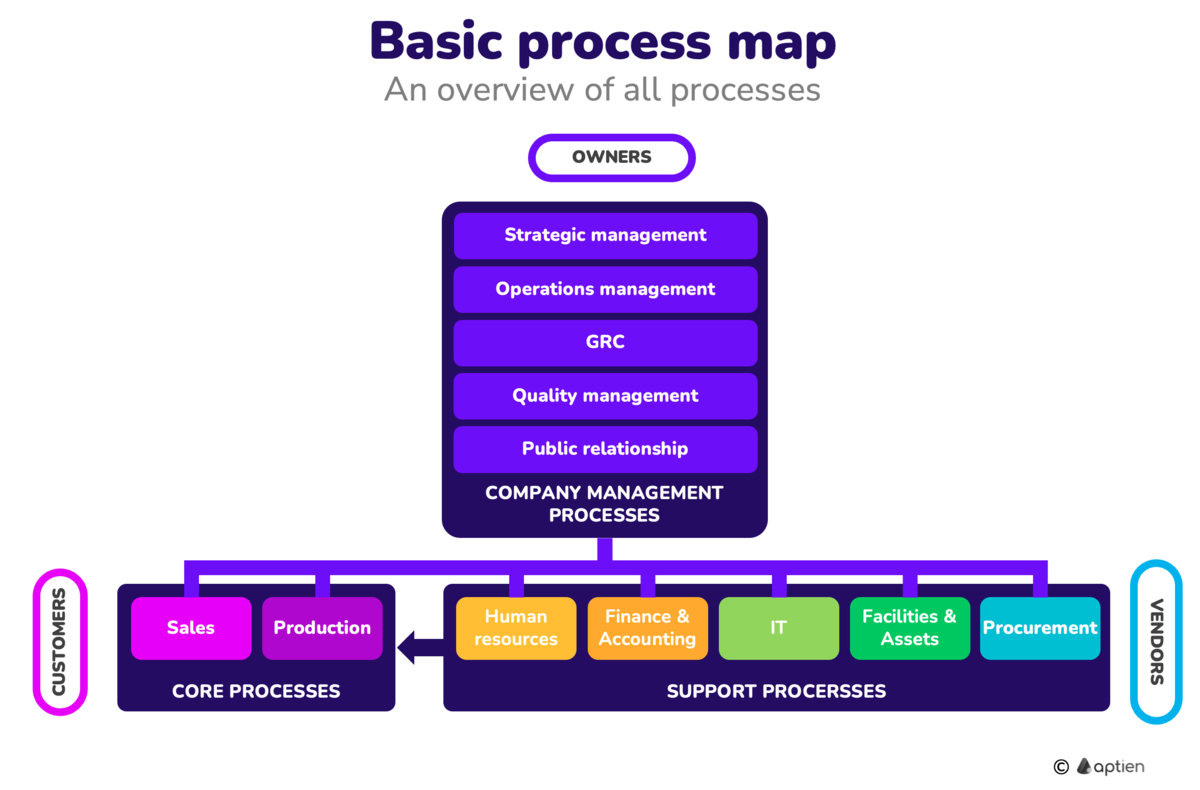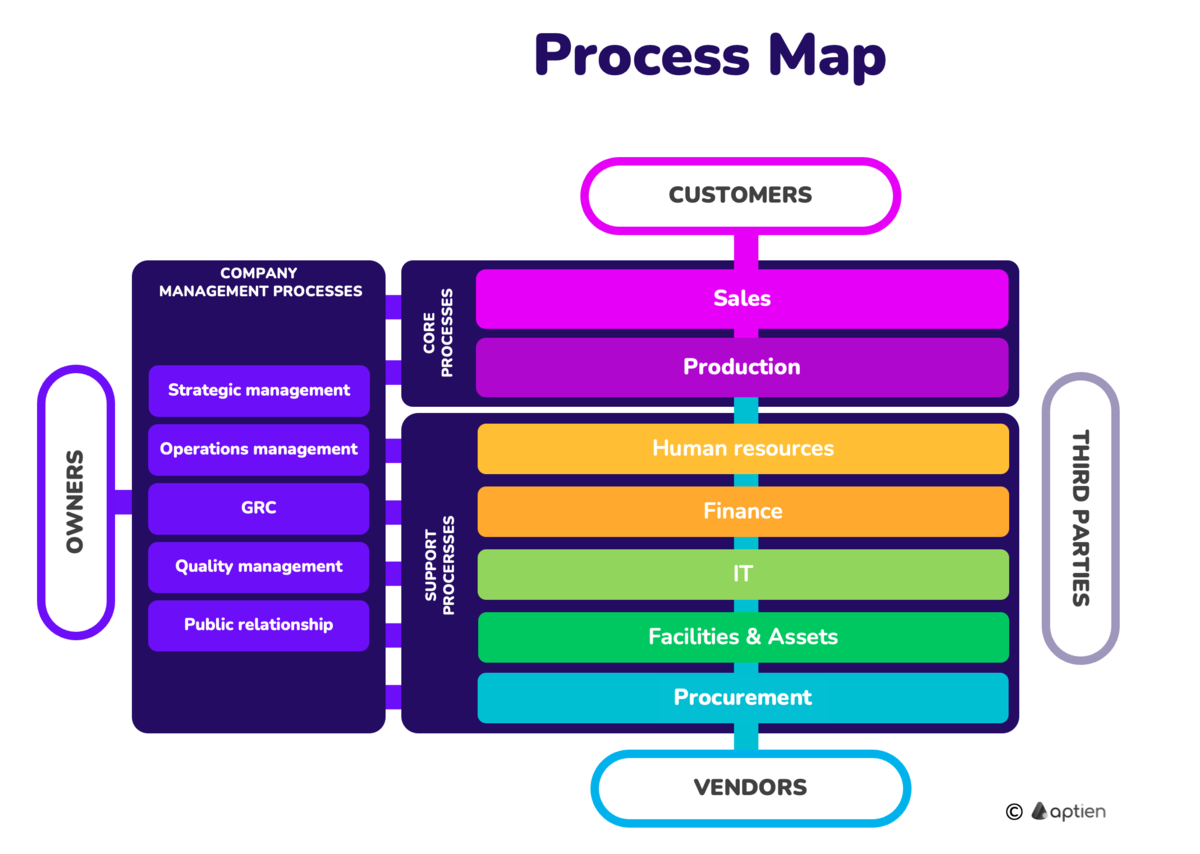Businesses are essentially organized collections of various processes, activities, and tasks. It is essentially a network of connected processes where people, technology, and information collaborate to generate value. Processes are not "extra" elements – they are fundamental to how an organization operates.
A Clear Process Map Helps Manage and Coordinate Processes Within the Company
A clear process map provides an overview and breakdown of all processes within the company. It represents a model of the entire company, not just one specific process.
- The process map categorizes company processes based on their value flow in the company and their organizational assignment (into departments)
- Helps visualize the connections between individual processes
- Helps define the responsibilities of managers, employees, or departments
How Can a Process Map Benefit Your Business?
- Helps define job roles, work procedures, and assigns responsibilities clearly
- Assists in documenting individual processes to ensure clarity and avoid isolation
- Forms the foundation for organizational charts and management responsibilities
- Serves as a critical component for developing internal policies and procedures
- Identifies potential risks, aiding in risk management and analysis
- Helps map out the value flow within your company
List of Core Processes in a Small to Mid-Sized Business
This map outlines the core processes within a business, categorized into key areas that interconnect and break down into specific tasks. These core areas include:
- Management and Strategy
- Products and Services (Processes for creating and delivering products and services)
- Sales, Marketing, and Customer Relations (Processes for selling, marketing, and managing customer interactions)
- Product and Service Delivery
- Customer Support
- Human Resources
- Financial Management
- IT and Information Management
- Asset and Workplace Management
- Procurement and Vendor Relations
- Operations Support and Backoffice
- Governance, Risk, and Compliance (GRC)
Production or Service Delivery Processes
- These are the processes where the organization's main product or service is created or developed, whether it’s a physical product or a service.
- These activities and processes are responsible for producing products or delivering services to customers.
- For manufacturing companies, the purpose is to produce goods or products, while for service organizations, it is to provide services to customers. Learn more about services
Sales and Customer Relationship Processes
- Sales activities
- Marketing efforts
- This encompasses the overall relationship with customers and the sales process.
Delivery of Services and Products
- Logistics and product delivery
- Provision of services
Customer Support
- Managing customer relationships
- Providing service and support
Human Resources Management
- Managing employees, including onboarding, development, and training
- Salaries and benefits
Financial Management
- Managing finances and cash flow
- Expense management
- Accounting processes
IT and Information Management
- Data, information, and knowledge management
- IT administration
Workplace, Infrastructure, and Asset Management
- Maintaining workplace environment and facilities
- Maintenance of machinery and equipment
- Building management
- Tools and equipment management
Supplier and Partner Management
- The company operates in connection with its environment, engaging with suppliers and partners to achieve its goals
- Processes for procurement and supplier management
- Communication and relationships with the community, government, regulators, stakeholders, and other external parties.
Operations and Back Office
- Includes all processes necessary for running and maintaining the organization's operations.
- Managing personnel and organizing work and tasks
- Legal services
GRC: Governance, Risk, and Compliance
- Encompasses processes crucial for the organization's overall functioning, including strategic planning and management
- GRC (Governance, Risk & Compliance), covering risk management, security, and compliance
- Quality management

